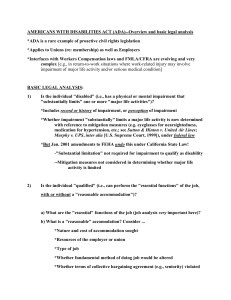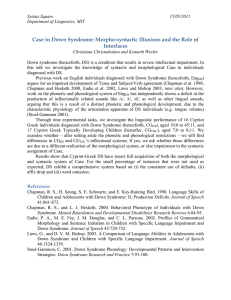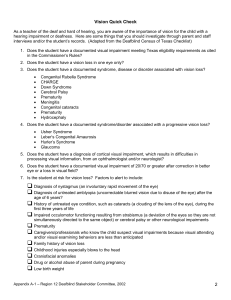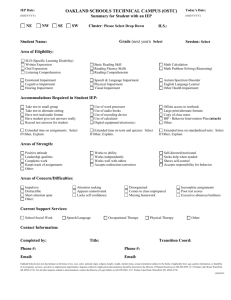Downs Syndrome - Scripture Union
advertisement
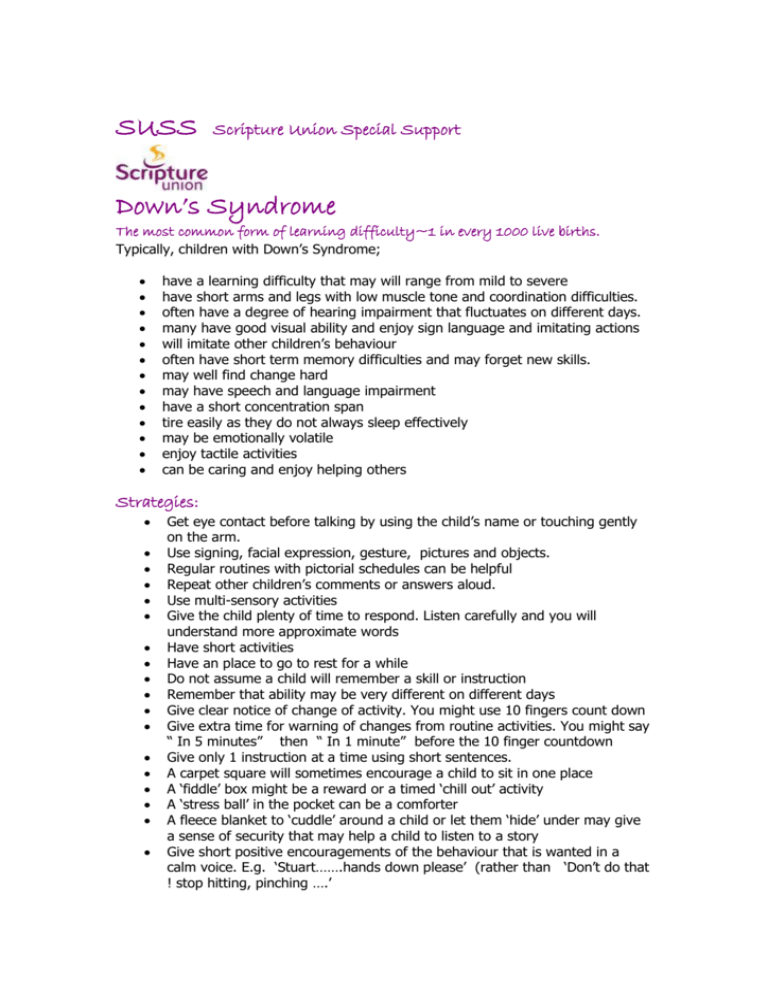
SUSS Scripture Union Special Support Down’s Syndrome The most common form of learning difficulty~1 in every 1000 live births. Typically, children with Down’s Syndrome; have a learning difficulty that may will range from mild to severe have short arms and legs with low muscle tone and coordination difficulties. often have a degree of hearing impairment that fluctuates on different days. many have good visual ability and enjoy sign language and imitating actions will imitate other children’s behaviour often have short term memory difficulties and may forget new skills. may well find change hard may have speech and language impairment have a short concentration span tire easily as they do not always sleep effectively may be emotionally volatile enjoy tactile activities can be caring and enjoy helping others Strategies: Get eye contact before talking by using the child’s name or touching gently on the arm. Use signing, facial expression, gesture, pictures and objects. Regular routines with pictorial schedules can be helpful Repeat other children’s comments or answers aloud. Use multi-sensory activities Give the child plenty of time to respond. Listen carefully and you will understand more approximate words Have short activities Have an place to go to rest for a while Do not assume a child will remember a skill or instruction Remember that ability may be very different on different days Give clear notice of change of activity. You might use 10 fingers count down Give extra time for warning of changes from routine activities. You might say “ In 5 minutes” then “ In 1 minute” before the 10 finger countdown Give only 1 instruction at a time using short sentences. A carpet square will sometimes encourage a child to sit in one place A ‘fiddle’ box might be a reward or a timed ‘chill out’ activity A ‘stress ball’ in the pocket can be a comforter A fleece blanket to ‘cuddle’ around a child or let them ‘hide’ under may give a sense of security that may help a child to listen to a story Give short positive encouragements of the behaviour that is wanted in a calm voice. E.g. ‘Stuart…….hands down please’ (rather than ‘Don’t do that ! stop hitting, pinching ….’ Pray regularly for each child that you serve alongside



